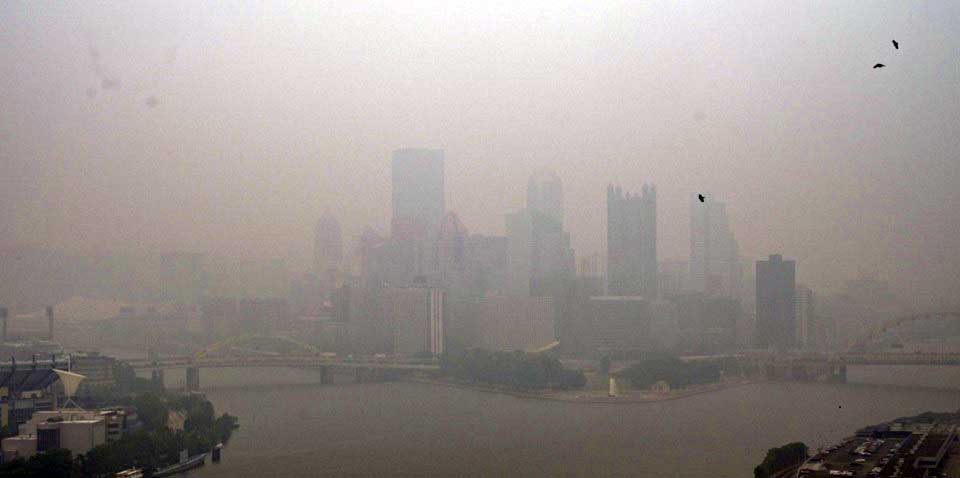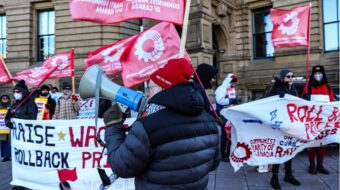
Smoke drifting across the United States from Canada’s wildfires is hitting the poor and minority communities the hardest, authorities said this week. Poor communities are already more likely to live near polluting plants and have higher rates of asthma.
The situation for these communities is now worsening as large swathes of the U.S., from Minnesota to New York, are shrouded in smoke from Canada.
Detroit, a mostly Black city with a poverty rate of about 30 percent, had some of the worst air quality in the U.S. this week, prompting the Environmental Protection Agency (EPA) to warn that “everyone should stay indoors.”
“The more breaths you’re taking, you’re inhaling, literally, a fire, camp smoke, into your lungs,” said Darren Riley, who was diagnosed with asthma in 2018, a few years after arriving in Detroit. “Many communities face this way too often,” said Riley, who is Black.
“And while this wildfire smoke allows, unfortunately, many people to feel this burden, this is a burden that far too long communities have faced day in and day out.”
The EPA’s AirNow.gov site showed cities including Chicago, Detroit, Indianapolis, and Cleveland, Ohio, had “very unhealthy air” as of mid-week.
A wider circle of unhealthy air spread into Pittsburgh, St Louis, and Louisville, Kentucky.
Earlier this month, smoke from the wildfires blanketed the U.S. east coast for days.
Another round of drifting smoke from the wildfires was moving through western Pennsylvania and central New York and headed towards the Mid-Atlantic, said National Weather Service meteorologist Byran Jackson.
Detroit’s southwest side is home to a number of sprawling refineries and manufacturing plants. It is one of the poorest parts of the city.
According to a 2022 report by the American Lung Association, the city’s short-term particle pollution ranked among the worst in the U.S.
In Chicago, where about 29 percent of the population is Black, Mayor Brandon Johnson urged young people, older adults, and residents with health issues to stay indoors. He pledged “swift action to ensure that vulnerable individuals have the resources they need to protect themselves and their families.”
A record 30,000 square miles of Canada have burned, according to the Canadian government. “As long as the fires are burning and the smoke is in the atmosphere, it is going to be a concern not just for Canadians but Americans as well,” Canadian meteorologist Steven Flisfeder said.
We hope you appreciated this article. At People’s World, we believe news and information should be free and accessible to all, but we need your help. Our journalism is free of corporate influence and paywalls because we are totally reader-supported. Only you, our readers and supporters, make this possible. If you enjoy reading People’s World and the stories we bring you, please support our work by donating or becoming a monthly sustainer today. Thank you!









